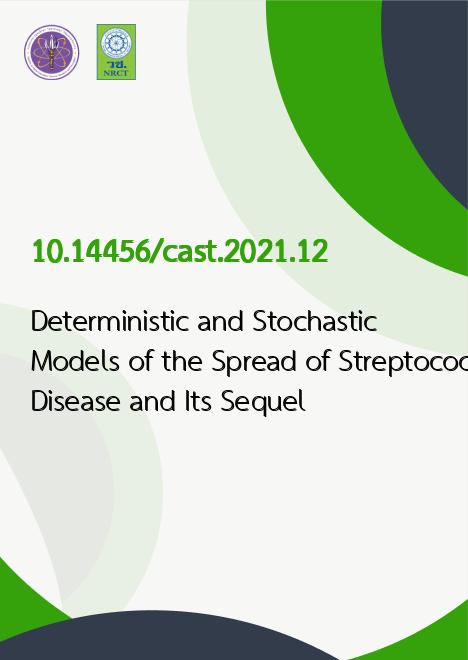
|
Deterministic and Stochastic Models of the Spread of Streptococcal Disease and Its Sequel |
|---|---|
| รหัสดีโอไอ | |
| Creator | Klot Patanarapeelert |
| Title | Deterministic and Stochastic Models of the Spread of Streptococcal Disease and Its Sequel |
| Contributor | Nichaphat Patanarapeelert and Natsuda Yokchoo |
| Publisher | King Mongkut's Institute of Technology Ladkrabang |
| Publication Year | 2564 |
| Journal Title | Current Applied Science and Technology |
| Journal Vol. | 21 |
| Journal No. | 1 |
| Page no. | 104-114 |
| Keyword | group A Streptococcus, acute rheumatic fever, deterministic model, stochastic model, carriers |
| URL Website | https://www.tci-thaijo.org/index.php/cast |
| Website title | https://www.tci-thaijo.org/index.php |
| ISSN | 2586-9396 |
| Abstract | The beta-hemolytic group A Streptococcus(GAS) is responsible for its sequel, acute rheumatic fever (ARF), whichmay lead to the more serious condition on other heart diseases. To gain a better understandingof the transmission in a population, we formulatedepidemic models using a standard compartmental model and acontinuous-time Markov chain. The modelsallow forthe contribution of disease carrier and the effect of treatment. The equilibrium points andstabilityare analyzed in relation to the basic reproduction number based on the deterministic model. For the stochastic model, numerical simulation of sample paths is performed. The results indicate that the dynamic behavior forthetwo approaches depends on the epidemic threshold. Under stable endemic condition, most sample paths fluctuate around its mean and deterministic curve. On the other hand, when the basic reproduction number is less than one, the stochastic system undergoes a minor outbreak, whilethe deterministic curve approaches zero.The results are expected to be the first step of a deeper analysis ofstochastic treatment linked to itsdeterministic counterpart. |